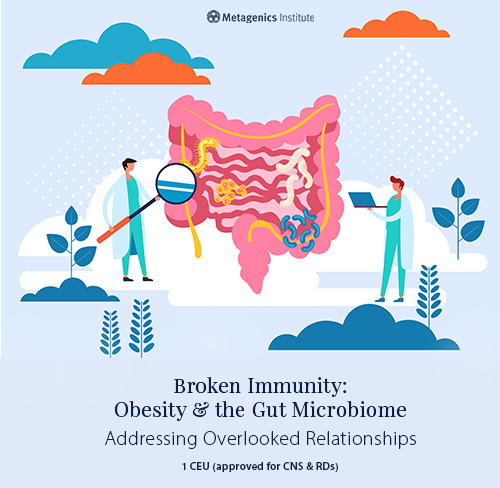
Prebiotics are types of food ingredients that are nondigestible by humans and broken down by human gut bacteria into compounds that are beneficial for humans. Human breast milk contains a rich source of prebiotics called “human milk oligosaccharides” or “HMOs,” which act as the very first prebiotics taken in by a nursing infant.1 Among the HMOs, 2’-fucosyllactose (2’-FL) is the most abundantly produced.2
The effect of 2’-FL was recently studied in adults with irritable bowel syndrome (IBS) and inflammatory bowel disease (IBD). The open-label study found that taking the formula twice daily for six weeks was associated with improvements in not only gastrointestinal (GI) symptoms, but also social function. On average, GI symptoms improved by 18.1%, and social function improved by 18.4%.3
In addition, analysis of participants’ stool showed that taking the formula for six weeks was associated with increases in bifidobacteria and acetate.3 Bifidobacteria are uniquely suited to metabolize HMOs because they produce the enzymes necessary to break down HMOs into the short-chain fatty acid acetate.4,5 Furthermore, the beneficial gut bacteria Faecalibacterium prausnitzii and the short-chain fatty acid butyrate also increased after taking the formula.3 F. prausnitzii is a main producer of butyrate in the human gut and can use acetate to make butyrate.6,7 Therefore, this study observation may suggest beneficial interactions among gut microbes via cross-feeding mechanisms.8
Interestingly, other research demonstrated that levels of F. prausnitzii are low in stool samples from patients with IBS and IBD.9,10 For this reason, increasing the growth of F. prausnitzii and the production of butyrate in the intestines have been suggested as novel therapies for IBS and IBD.11–13 The reason for this is that butyrate regulates intestinal motility, visceral perception, and barrier function.14
Why is this clinically relevant?
- This study demonstrated that consumption of the 2’-FL-containing nutritional formula was associated with clinically meaningful improvements in GI symptoms and social function in patients with IBS and IBD.
- The magnitude of improvements in symptoms was clinically meaningful. As the authors noted, the improvement in overall GI quality of life score exceeded what has been described in the medical literature as the “minimal clinically important difference” (MCID) for the questionnaire used in the trial.16
- The study also observed increases in the beneficial short-chain fatty acids acetate and butyrate and health-promoting gut bacteria, including bifidobacteria and F. prausnitzii.
Citations
- Coppa G V et al. The first prebiotics in humans: human milk oligosaccharides. J Clin Gastroenterol. 2004;38:80-83.
- Castanys-Muñoz E et al. 2’-fucosyllactose: An abundant, genetically determined soluble glycan present in human milk. Nutr Rev. 2013;71(12):773-789.
- Ryan JJ et al. Impact of 2′-fucosyllactose on gut microbiota composition in adults with chronic gastrointestinal conditions: batch culture fermentation model and pilot clinical trial findings. Nutrients. 2021;13(3):938.
- Musilova S et al. Beneficial effects of human milk oligosaccharides on gut microbiota. Benef Microbes. 2014;5(3):273-283.
- Lawson MAE et al. Breast milk-derived human milk oligosaccharides promote Bifidobacterium interactions within a single ecosystem. ISME J. 2020;14(2):635-648.
- Martín R et al. Searching for the bacterial effector: The example of the multi-skilled commensal bacterium Faecalibacterium prausnitzii. Front Microbiol. 2018;9(MAR):1-8.
- Duncan SH et al. Contribution of acetate to butyrate formation by human faecal bacteria. Br J Nutr. 2004;91(6):915-923.
- Vuyst L De et al. Cross-feeding between bifidobacteria and butyrate-producing colon bacteria explains bifdobacterial competitiveness, butyrate production, and gas production. Int J Food Microbiol. 2011;149(1):73-80.
- Liu H et al. Altered molecular signature of intestinal microbiota in irritable bowel syndrome patients compared with healthy controls: A systematic review and meta-analysis. Dig Liver Dis. 2017;49(4):331-337.
- Kostic AD et al. The microbiome in inflammatory bowel disease: Current status and the future ahead. Gastroenterology. 2014;146(6):1489-1499.
- Vergara DM et al. Short chain fatty acids (butyric acid) and intestinal diseases. Nutr Hosp. 2017;34:58-61.
- Załȩski A et al. Butyric acid in irritable bowel syndrome. Prz Gastroenterol. 2013;8(6):350-353.
- Soldavini J et al. Pathobiology and potential therapeutic value of intestinal short-chain fatty acids in gut inflammation and obesity. Dig Dis Sci. 2015;58(10):2756-2766.
- Canani RB et al. Potential beneficial effects of butyrate in intestinal and extraintestinal diseases. World J Gastroenterol. 2011;17(12):1519-1528.





